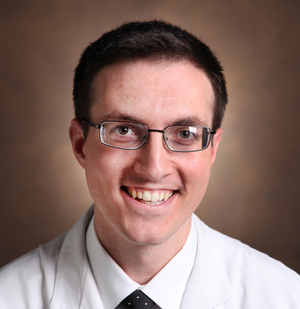The administration of supplemental oxygen has long been one of the most common therapies in the treatment of hospitalized patients. Yet, despite its frequency, there has been little scientific information available about what level of oxygen best optimizes clinical outcomes.
A Vanderbilt University Medical Center study released today in the New England Journal of Medicine, looked at the oxygen saturation target that results in optimal outcomes (number of days alive and free of mechanical ventilation) in 2,500 critically ill adults receiving mechanical ventilation.
Each year 2-3 million critically ill adults in the United States receive invasive mechanical ventilation in a hospital setting. The in-hospital mortality for this group of patients remains about 35%.
The three-year Pragmatic Investigation of optimaL Oxygen Targets (PILOT) trial compared three basic levels of supplemental oxygen that have been recommended in international guidelines –– a lower pulse oximetry target (SpO2 of 90%) which represented the least amount of supplemental oxygen needed to maintain a normal blood oxygen level; an intermediate level (SpO2 of 94%); and a higher target (SpO2 of 98%) –– in patients in VUMC’s Medical Intensive Care Unit (MICU) or Emergency Department with planned admission to the MICU.

The study found that all three levels appear equally safe and effective.
“There was no evidence that any one of the three approaches was better than the others,” said Matthew Semler, MD, MSc, assistant professor of Medicine in the Division of Allergy, Pulmonary and Critical Care Medicine and author of the study.
“The reason for studying the three groups was to understand the balance of the potential positive and negative effects of supplemental oxygen administration,” Semler said. “In current clinical practice, some clinicians target a higher oxygen level, which might have the positive effect of creating a bigger buffer against episodes of dangerously low oxygen saturation but might also have negative effects of toxicity from the oxygen itself, such as inflammation and constriction of blood vessels.
“Other clinicians target a lower oxygen level, which might avoid toxicity from the supplemental oxygen, but would provide less of a buffer against low oxygen saturation. Still, other clinicians target an intermediate oxygen level, which might avoid both oxygen toxicity and low oxygen levels or might instead intermittently lead to both sets of risks,” Semler said.
Importantly, this study shows that all three approaches are safe for patients overall, but investigators still need to understand whether the effects differ for subsets of patients, Semler said.
“Understanding whether the evidence from the trial can help us personalize the best approach to oxygen therapy for patients based on their individual characteristics is an important next step.”
Semler said that for now clinicians can use the current evidence presented in the NEJM study and be confident that any of the three oxygen saturation targets are reasonable for mechanically ventilated patients.
“As long as you’re avoiding extremely low targets and extremely high oxygen levels, anything in this normal range is reasonable to use in practice. They’re all reasonable and safe,” he said. “Importantly, the PILOT trial demonstrates how Vanderbilt’s culture as a Learning Healthcare System can efficiently generate new knowledge about which of the treatments our patients are already receiving result in the best outcomes. Our obligation is to understand which treatments are best for which patients, not just for oxygen but for every treatment that patients commonly receive in our hospitals.”
The study received funding from the National Heart, Lung, and Blood Institute of the National Institutes of Health.












